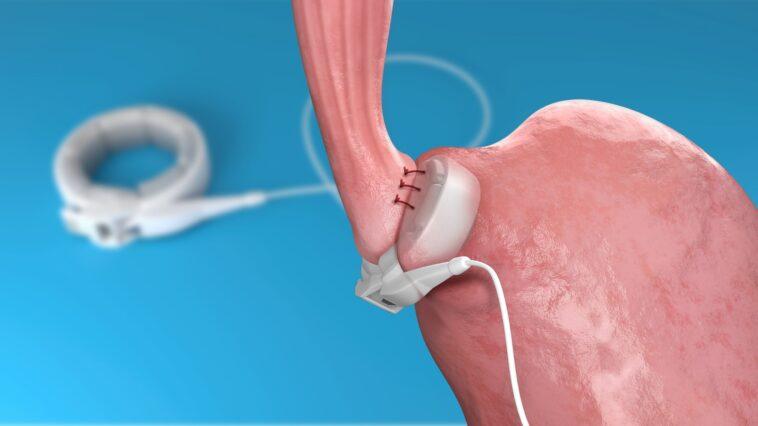The gastric band is a restrictive bariatric intervention for the surgical treatment of obesity, and consists of the positioning of a silicone ring in the upper part of the stomach, close to the esophagus, in order to limit the introduction of food.
The moment the ring closes, the stomach assumes the shape of an hourglass, although not symmetrical: the small upper “pocket” has the capacity of a cup of coffee, while the rest of the gastric body is below. from the band.
After the intervention, a small amount of food is enough to completely fill the gastric pocket, so that the patient is satisfied immediately.
Who are the ideal candidates?
It is indicated for patients with a high body mass index, greater than 40 kg / m2 (or greater than 35 kg / m2 if they have risk factors), with obesity for five consecutive years despite attempts made by himself to lose weight with non-surgical methods.
This intervention requires the collaboration of the patient, who must agree to undergo the “follow up” program planned after the application of the band, as well as demonstrate following the necessary care and an adequate diet. For this reason, patients with alcohol addiction problems or suffering from psychological or psychiatric disorders are excluded from treatment.
What is the operation about?
From a technical point of view, it is a relatively simple intervention , since, currently, the procedure used is the placement of an adjustable band by means of laparoscopy, being a procedure that has the advantage of being completely reversible .
Through 5 small incisions, the surgeon introduces the instruments and begins to immobilize the gastric fundus through the gastric-brake ligament. A probe equipped with a balloon is placed inside the stomach that is inflated with 19-20 ml of air in order to be able to calibrate the gastric pocket created. The “band” (a silicone ring) is inserted into the abdomen and the surgeon places it around the stomach, closing it with the help of surgical instruments. Three stitches keep it from moving out of place.
At the end of the intervention, the surgeon places a reservoir under the skin, which is connected to the band, and serves to calibrate the ring according to the needs, being able to vary the orifice that affects the entry of food and, consequently, the sensation satiety.
How do you lose weight?
Weight loss, as you can guess, is due to less food intake . The small size of the gastric pocket favors the feeling of satiety, so the patient does not feel the need to consume large amounts of food.
The weight loss that occurs after the placement of the band can reach 40-50%, being aware that, in the long term, it is possible to recover a part of it, especially if the patient has not maintained a diet adequate.
Depending on the suitability of the diet, as well as the results obtained and possible side effects, the specialist will decide how to calibrate the ring, making specific variations under radiological control.
Is the intervention reversible?
Operated patients must undergo a quarterly visit during the first year. From there, an annual check is enough to evaluate, through analysis, possible nutritional or vitamin deficiencies.
In case of complication, it is possible to completely remove the ring without altering the anatomical and functional integrity of the esophagus and stomach, which return to their preoperative state




GIPHY App Key not set. Please check settings